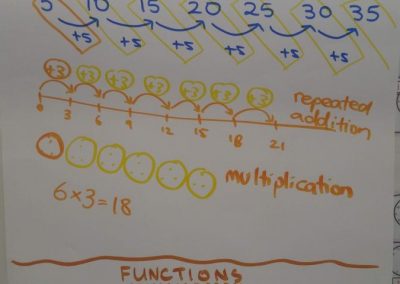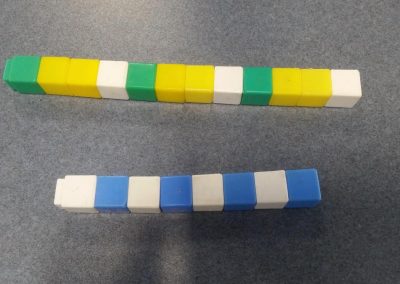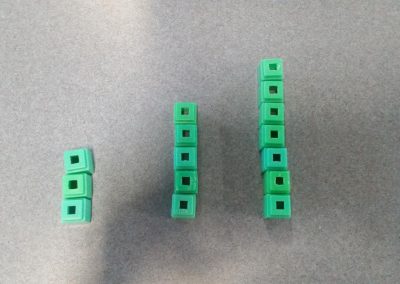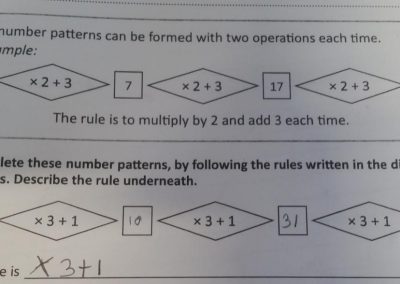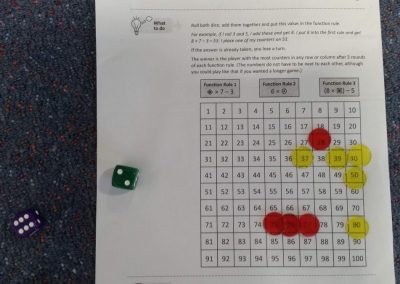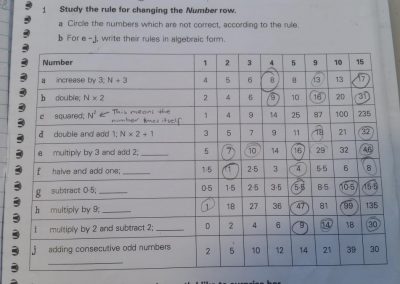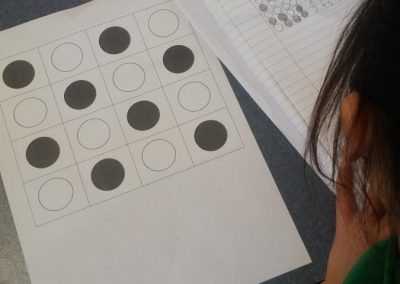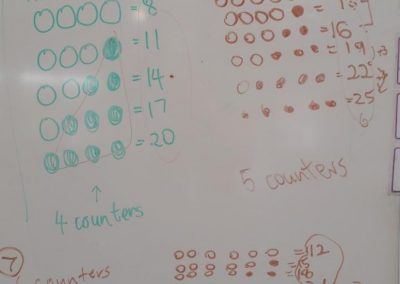Year 3/4 Mathematics
PATTERNS AND ALGEBRA IN YEAR 3/4
Learning Intention: I will learn about a core and a loop in a pattern.
Success Criteria: I can do it when I identify a core and a loop in shape and number patterns.
What do you think of when you hear the word, ‘pattern’? Perhaps a colour pattern, a tile pattern, maybe even a fabric pattern. But, have you ever delved into the mathematical reasoning behind the patterns you see? Well, over the last two weeks in Maths the Year 3/4s have been investigating the mathematical basis of patterns.
We have investigated how patterns can be represented in two different ways:
Shape/ Colour
For example:
blue, orange, blue, blue, blue, orange, blue, blue, blue, orange, blue, blue
Number
For example:
3, 6, 9, 12, 15, 18, 21, 24, 27, 30
Nevertheless, no matter how patterns are represented, there is one aspect that is common between the two representations. That is, they both have a ‘core’ and ‘loop/s’. The core of a pattern is the foundation of the pattern and can be also known as the rule. Additionally, the repetition of the core is known as the loop.
Shape/ Colour
For example, the bold is the core and the italicised in the loop:
blue, orange, blue, blue, blue, orange, blue, blue, blue, orange, blue, blue
Number
For example, the original +3 in bold is the core and every repetition of +3 in italics is the loop:
3 6 9 12 15 18 21 24 27 30
+3 +3 +3 +3 +3 +3 +3 +3 +3
Not only this, but pattern-thinking is the foundation for algebraic equations!
Algebraic Equations
For example:
Shape Number 1 has 3 lines /_/
Shape Number 2 has 5 lines /_/_/
Shape Number 3 has 7 lines /_/_/_/
So, the core = n x 2 +1
Want to find out more about the patterns we’ve been exploring? Have a look at the images in this blog post to view examples of how we find and make patterns, using cores and loops in a variety of representations.

